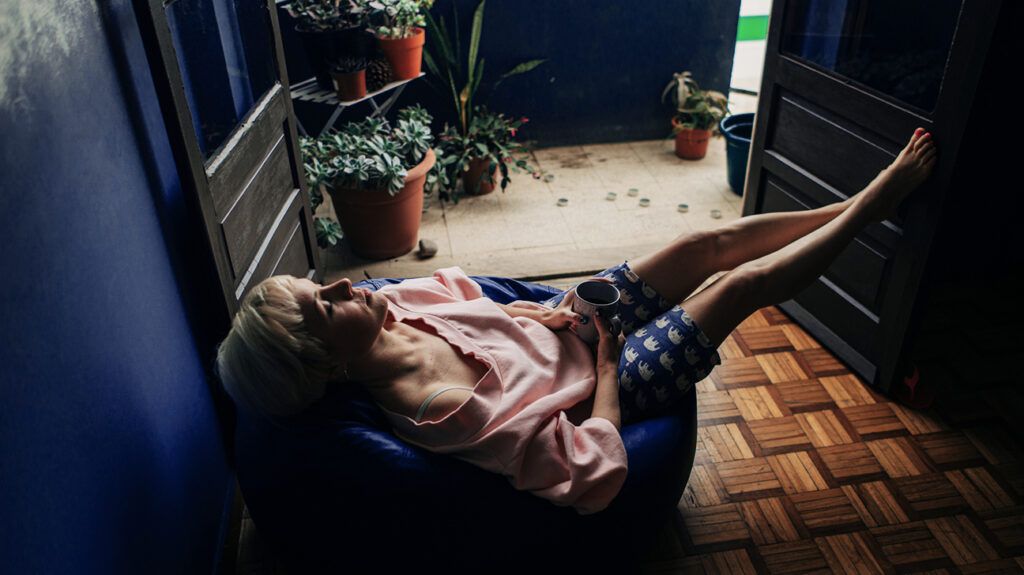The menstrual cycle can cause many symptoms, including sore breasts. Hormone fluctuations before a period can lead to breast tenderness or pain.
Doctors do not fully understand what causes these breast symptoms, but they know that specific hormones are involved.
People can take some measures to reduce breast discomfort. However, if their breast pain becomes severe or they have signs of a breast infection, they should seek medical attention.

According to the American Academy of Family Physicians (AAFP), hormone changes due to menstruation are the most common cause of breast pain.
Cyclic mastalgia, or breast pain related to a menstrual cycle can worsen during the luteal phase when estrogen levels increase and progesterone levels are low. These changes can also cause lymph node swelling, which may contribute to breast pain too.
An increase in prolactin can also lead to tenderness and swelling. This hormone stimulates breast milk production in women following childbirth. It is present in the body of females, and it can affect the breasts even if a woman has not recently given birth.
Breast pain may also occur around the time of ovulation, which is when an ovary releases an egg for potential fertilization. It usually takes place 12 to 14 days before a person has their period.
However, hormones may not be the only cause of sore breasts before a period.
Some women report pain in only one breast. If hormones were the only underlying cause, some doctors believe that both breasts would respond the same way.
Therefore, it is possible that other changes in the body can cause breast pain around the time of menstruation. Another explanation is that the cells in each breast respond differently to fluctuating hormone levels.
The feeling of breast pain may differ from person to person. Some people describe the pain as soreness, while others are more likely to define it as achiness or tenderness.
Breast pain may:
- be dull
- occur in one or both breasts
- radiate to the underarms
- feel sharp at times
- occur alongside swelling
- feel more intense in the nipple area
Some people experience constant pain over several days, while others find that it comes and goes. Breast soreness may also make it uncomfortable to wear regular bras or tight clothing.
Breast pain may also occur as a result of other factors, including:
- a clogged or plugged milk duct
- mastitis, a breast infection that can develop while breastfeeding
- fibrocystic breast tissue, which makes the breasts dense and lumpy and may be more painful around menstruation
- large, heavy breasts
- a history of breast surgery
- using hormone therapy medications
- taking certain medications, such as digitalis, methyldopa, spironolactone, diuretics, chlorpromazine, or oxymetholone
- a breast injury
- water retention
Breast cancer can sometimes cause breast pain, but this is rare as the disease tends to be slow-growing and to produce other symptoms before pain occurs.
However, a rare form of breast cancer called inflammatory breast cancer can cause redness, pain, or swelling in the breasts. These symptoms usually only affect one breast.
Treatment for sore breasts before a period depends on the underlying cause.
The following treatments may help treat pain that relates to menstruation:
- over-the-counter pain relievers, such as ibuprofen or acetaminophen
- birth control pills to control hormone fluctuations
Alternatively, if an infection is responsible for the pain, a doctor may prescribe antibiotics.
In rare instances, a doctor may prescribe other medications, such as danazol, which is a male hormone that research has shown to reduce breast pain. However, this medication has significant side effects, so doctors do not usually recommend it.
The following lifestyle changes and home remedies may help relieve breast soreness:
- wearing a larger or more supportive bra or trying a different cup size
- wearing a supportive bra at night
- reducing the amount of caffeine in the diet by limiting coffee, soda, energy drinks, and tea
- eating less salt to reduce water retention
- using hot and cold therapy, such as ice packs or heating pads
According to the AAFP, taking supplements, such as vitamin E or vitamin B-6, may help reduce breast pain.
Low-impact exercise may also be beneficial, but high-impact activities, such as running or jumping, might cause additional breast pain.
A person should see their doctor if they have any of the following symptoms:
- a painful breast lump or lumps
- bloody or foul-smelling nipple discharge
- breast pain that lasts for more than several weeks
- breast pain that makes it hard to do regular activities, even if the pain ties in with the menstrual cycle
- signs of infection, such as warmth or redness of the breast or fever
A doctor will typically ask questions about a person’s symptoms to determine what makes the pain worse or better and how long it lasts.
It can be helpful to let the doctor know if the pain consistently happens at certain points during the menstrual cycle.
The doctor may also examine the breast for signs of injury or infection. Sometimes, they may recommend an imaging test, such as an ultrasound or mammogram.
Sore breasts before a period are normal but can be bothersome. The soreness is usually due to hormone fluctuations.
Home remedies and medical treatments are available to lessen menstruation-related breast pain.
If these do not reduce discomfort, it may help to speak to a doctor.
